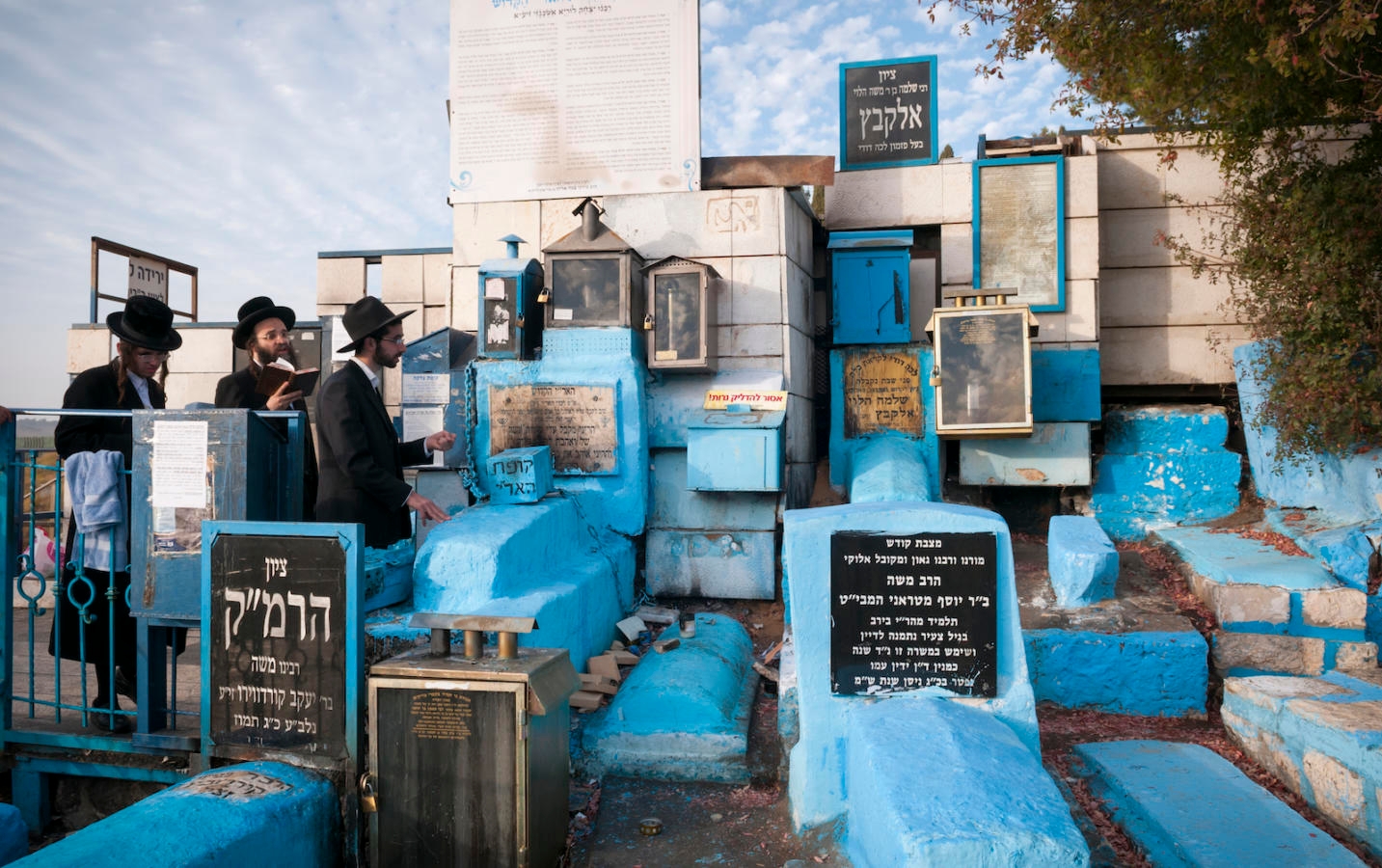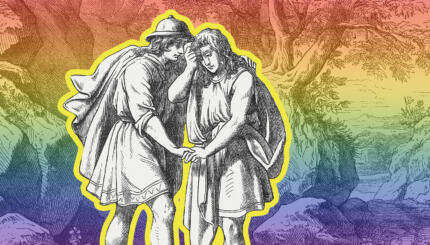In 1492 the Jews of Spain were expelled by royal decree; five years later the Jews of Portugal faced a similar fate. It is hard to overestimate the impact of this disruption. Iberian Jewry had lived in comparative peace with its Muslim and Christian neighbors for hundreds of years. These were the most stable and prosperous Jewish communities since the glory days of Judah and Israel. Suddenly, they were swept into exile like every Jewish community in history before them.
The Jews who were forced to leave the Iberian peninsula could carry little in the way of concrete riches, but the treasure of intellectual achievement they took with them was immense.
In no field was this truer than in the realm of Jewish mysticism. And the results of that involuntary exodus could be seen almost immediately. By the 16th century, the Zohar was an integral part of Jewish religious thought, and kabbalistic thinking was becoming part of the mainstream, spurred by the dispersion of its principal adherents. New intellectual centers sprang up in Italy, Turkey, and, most of all, Safed (Tz’fat in Hebrew) in Palestine.
Products of Safed
It was in Safed that Moses Cordovero authored a definitive commentary on the Zohar. It was in Safed that Joseph Caro authored the Shulkhan Arukh, the definitive code of Jewish law. And it was in Safed that the single most influential thinker in all of medieval Jewish mysticism emerged, Rabbi Isaac Luria (1534-1572), also known by the acronym Ari (the Lion).

Help us keep Jewish knowledge accessible to millions of people around the world.
Your donation to My Jewish Learning fuels endless journeys of Jewish discovery. With your help, My Jewish Learning can continue to provide nonstop opportunities for learning, connection and growth.
Safed was, and is, a small town in the Galilee, an unlikely place to serve as a locus for some of the finest Jewish minds of the 16th century. But through a complicated series of circumstances, that is precisely what it was. Moses Cordovero had already established himself there, writing his many important kabbalistic works, and Joseph Caro had also settled in Safed before Luria arrived.
Luria taught his esoteric thought to a dozen or so followers before his death at 38 in an epidemic. Rabbi Hayim Vital, his amanuensis [one who dictated Luria’s writings], recorded his ideas and, in turn, taught them to a select few, in keeping with Luria’s wishes that they not be disseminated to the masses. But by the 17th century, Luria’s ideas and the unique vocabulary in which they were expressed had not only spread throughout European Jewry; they had become a central pillar of traditional Jewish thought, a position they occupy to this day.
Gershom Scholem argues that Luria and his followers devised a religious ideology that was a direct response to the afflictions of the Jewish people of the time. The exile of the Iberian Jewry was no less a tragedy than the destruction of the Temple in 70 C.E. An answer was needed to the question of the existence of evil in the world–the sort of evil that had forced thousands of Jews to convert to Christianity at swordpoint, killed countless thousands of other Jews, and finally driven the Iberian Jews into exile.
Contraction
The key concepts in Lurianic are tzimtzum (contraction)and the “shattering of the vessels.” Luria posits a story of creation in which Creation is essentially a negative act in which the Ein Sof (God’s essential self) must bring into being an empty space in which Creation can occur. The Almighty was everywhere–only by contracting into itself, like a man inhaling in order to let someone pass in a narrow corridor, could the Godhead create an empty space, the tehiru (Aramaic for “empty”), in which the Creation could occur. God retracts a part of the Eternal being into the Godhead itself in order to allow such a space to exist, a sort of exile. So Creation begins with a Divine exile.
After the tzimtzum, a stream of Divine light flowed from the Godhead into the empty space the Almighty had created, taking the shape of the sefirot and Adam Kadmon (Primal Man). The light flowed from Adam Kadmon, out of his eyes, nose, mouth, creating the vessels that were eternal shapes of the sefirot. But the vessels were too fragile to contain such a powerful–Divine–light. The upper three vessels were damaged, the lower seven were shattered and fell.
Thus the tehiru became divided into the upper and lower worlds, a product of the shevirah (shattering). And so evil came into the world, through a violent separation between those elements that had taken part in the act of creation and others that had willfully resisted, contributing to the shattering of the vessels. The elements that had fought against the creation were the nascent powers of evil, but because they opposed creation they lack the power to survive; they need access to the Divine light, and continue to exist in the world only to the extent that they can gather the holy sparks that fell when the shevirah took place.
Repairing the World
Joseph Dan has noted that the genius of Lurianic Kabbalah is the way in which it unites Jewish mysticism and Jewish ethics. That unification occurs here, in the conception of the way in which mankind can undo the damage done in the Creation, can repair the shevirah–through [repairing the world].
For Luria and his followers, tikkun had a very specific meaning. Every time that a human performs a mitzvah (commandment), she raises one of the holy sparks out of the hands of the forces of evil and restores it to the upper world. Conversely, every time that a human sins, a divine spark plunges down. The day will come, if all do their part, when the entire remaining supply of Divine Light will be restored to the upper world; without access to the Divine Light, evil will be unable to survive and will crumble away to dust.
For Luria and his followers, the commandment of tikkun olam (repairing the world) takes on a highly specific meaning in which it is through Jewish ritual life that we contribute to the reversal of the shattering of the vessels, ward off the powers of evil, and pave the way of Redemption. Ethical behavior–following the mitzvot, no matter how seemingly trivial–takes on a new, cosmic significance. Forget to say the blessing over bread? You have contributed to universal evil. Put up a mezuzah on the door of your new house? You have helped to redeem the entire world.
Clearly, the act of repairing the world is arrogated to the Jewish people exclusively in this system. At first, God was hoping that Adam would be a perfect human being and therefore would complete the redemption by himself, but Adam’s sin shook down more of the sparks. When God chose the Jewish nation and they heard the Revelation at Sinai, it became their task to restore the world.
The responsibility placed on the Jewish people is a collective one; under Luria’s terms, the Jewish people should be seen as a fighting army under siege. No days off, no respite, a hard battle to live by the Commandments and to repair the world. If one falters, others must take up his burden. Consequently, Lurianic thinking combines a radical understanding of God and Creation with a profoundly conservative attitude towards Jewish observance. But it also reanimates the daily routine of observing the mitzvot, giving them a new and more intense significance than ever before.
One can easily see how appealing this notion–that merely by fulfilling the mitzvot one could do battle against evil–must have been to the persecuted, weary Jews of Luria’s time.
Reprinted with permission from Essential Judaism, published by Pocket Books.



